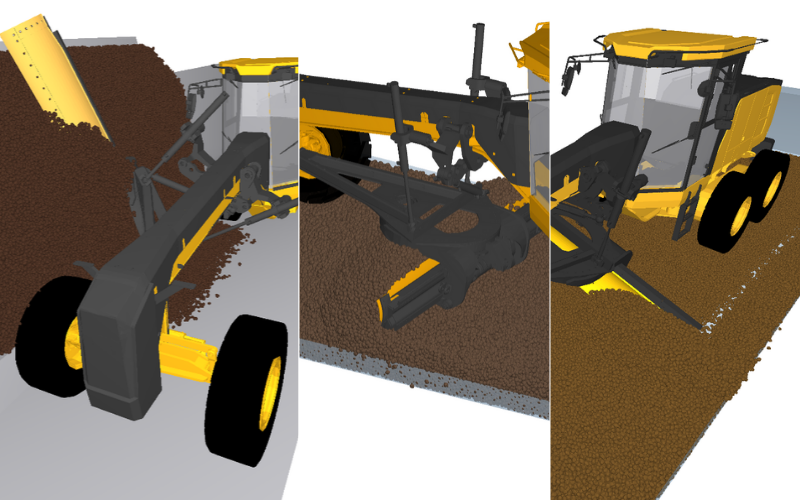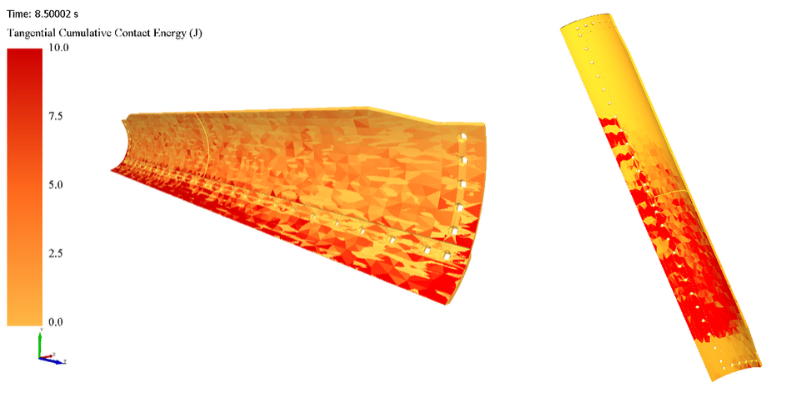Evaluating Road Graders Design and Performance at XCMG Using Altair EDEM™ Simulation Software
A road grader (also known as motor grader) is a construction machine that has a long blade used to create a flat surface during the grading process. Xuzhou Construction Machinery Group Co. (XCMG), one of the largest construction machinery companies in the world, have been using EDEM simulation software to evaluate and optimize the design and performance of their graders. They have been focusing on three different applications: flattening, ditching and scraping.

One key aspect of simulating road grader operations is to realistically model the interaction between the blade and the soil. Real world terrains can vary widely with different compressibility and stickiness, which makes this type of simulation challenging.
XCMG made use of EDEM’s Soils Starter Pack, a library of multiple soils models that use advanced physics models inbuilt in EDEM for modeling a range of soils from gravels to soft compressible soils. This enabled XCMG to directly introduce a different material model to represent the specific soil in each scenario, including dry or ‘sticky’ soils and easily compare how different these would interact with the grader.
In addition, EDEM also offers the possibility of creating almost any soil state easily in a simulation with the block factory tool, which places the soil instantaneously along the required area. This allows XCMG to model different soil configurations and positionings with high fidelity.
When it comes to analyzing the different grader applications, numerous useful sets of data can be obtained in EDEM. As can be seen in the images below, some of the key aspects that can be analyzed through simulation include the wear on the grader blades, and how that varies depending on the blade’s position or orientation.

Moreover, the behavior and state of the soil used in the simulation can also be subject to analysis. EDEM enables users to forecast what the soil’s compaction, displacement or flow will be when the equipment is handling and moving it.

Through the use of these EDEM features, relevant results for a wide range of heavy machinery applications can be obtained, which assist in the design and functionality optimization.
Examples of these analyses can be seen in the video below:
EDEM brings a lot of benefits to manufacturers of road construction equipment such as graders:
- Get key insight into the interaction between machine and soil
- Predict wear on the equipment
- Adjust blade position, orientation and speed for optimal results
- Visualize soil response and behavior
- Virtually test the use of the machinery with multiple soil types in different terrain features
- All of these result in improved and optimized design and performance.
For more examples of EDEM applications visit this page.




